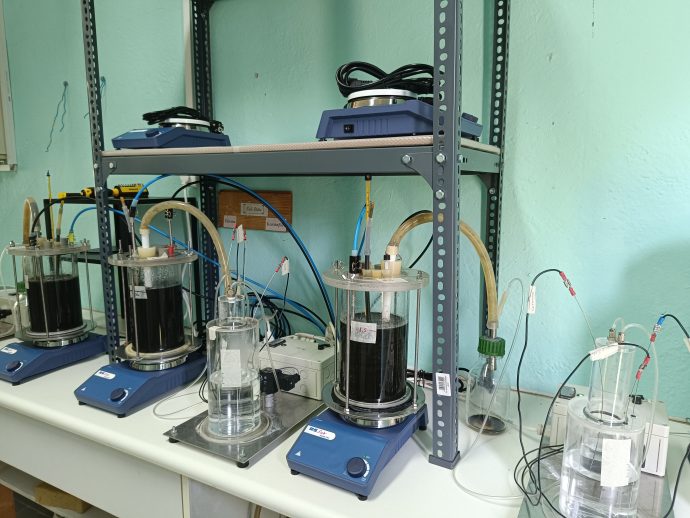Lab-scale continuous stirred tank reactors (CSTRs) which have been set up and they operate under controlled conditions with elevated levels of lignocellulose and ammonia to reflect the challenges typical of industrial biogas reactors. The optimal conditions are already being assessed to develop a practical and effective bioaugmentation platform for industrial applications. The primary objective is to identify and validate conditions under which bioaugmented composite inocula can efficiently enhance biogas production in reactors challenged by lignocellulose and ammonia-rich substrates. This assessment will use reactors inhibited by lignocellulosic and ammonia-rich feedstocks, which will undergo bioaugmentation to validate the effectiveness of the optimally preserved composite inoculum. The advanced composite inocula will be applied to evaluate its effectiveness in order to maintain and increase AD process efficiency and function under high ammonia concentrations due to lignocellulosic feedstocks.

Performance is monitored continuously, focusing on the reactor’s performance to compare when the bioaugmentation inoculum is applied regarding lignocellulose and ammonia degradation efficiency, and overall biogas production enhancement and recovery time. Based on observations and findings from the continuous reactors and upscale validation, a practical bioaugmentation strategy will be proposed for industrial application. This overall strategy prioritizes reactor recovery time, high lignocellulose and ammonia degradation rates, and biogas production improvements. Emphasis will be given to the best bioaugmentation platform which will serve as a model for enhanced biogas production, offering a reliable approach for managing inhibition due to high lignocellulosic and ammonia substrates towards an application protocol to maximize benefits in challenging biogas reactor environments.

